Introducing the best budget IEMs list, where the price-to-performance ratio is the name of the game!
| Name | Driver | Sensitivity | Impedance | Price |
|---|---|---|---|---|
| DUNU Titan S Best Neutral Set | 11mm dynamic driver with polycondensated crystal polymer diaphragm | 110 dB | 32 Ω | BUY |
| Tangzu Zetian Wu Best Balanced Set | 14.5mm planar driver | 100 dB | 16 Ω | BUY |
| Final Audio E3000 Best Basshead Set | 6.4mm dynamic driver | 100 dB | 16 Ω | BUY |
| LETSHUOER S12 Pro Best Treblehead Set | 14.8mm planar magnetic driver | 102 dB | 16 Ω | BUY |
| KBEAR Aurora Best Timbre | 10mm nano titanium-plated diaphragm dynamic driver | 105 dB | 18 Ω | BUY |
| KBEAR Ormosia Best Smooth Set (Smooth Criminal) | 10 mm composite dynamic driver + composite balanced armature driver | 108 dB | 16 Ω | BUY |
| 7Hz Salnotes Zero Best Bang For Buck | 10mm dynamic driver, metal composite diaphragm | 108 dB | 32 Ω | BUY |
| DUNU Talos Best Overall Planar | 14.6mm planar magnetic driver with customized dual balanced armature (BA) drivers | 100 dB | 16 Ω | BUY |
| BQEYZ Autumn Best Customizable Set (For Tinkerers) | 13mm dynamic driver | 110 dB | 46 Ω | BUY |
| BLON BL-03 Old But Gold | 10mm carbon diaphragm dynamic driver | 102 dB | 32 Ω | BUY |
| Truthear HEXA Editor's Choice (Best Under $100) | 1 x 10mm liquid crystal polymer (LCP)/polyurethane dynamic driver (DD) and 3 x customized balanced armature (BA) drivers | 120 dB | 20.5 Ω | BUY |
How to Pick the Best Bang for Buck IEMs
The idea that audiophiles are enthusiasts who spend thousands of dollars on audio gear is a common misunderstanding. Not everyone who enjoys music has that extra cash to burn.
The good news is: Good sound and low expense are not mutually exclusive.
Pricier gear doesn’t guarantee better sonic fidelity, and diminishing returns are a real thing in this hobby, especially as you go up the ladder.
Verily, the budget in-ear monitor (IEM) market is a vast rabbit hole to fall into. It can be tough to distinguish outstanding gems from the typical pool of cheap sidegrade spammy options.
To help you with that, we’ve put a variety of models to the test and compiled a list of the best budget IEMs for you to choose from, for less than $200.
But first, here are a few factors we considered in coming up with this list. Read on to learn more about it so you can make an informed purchase!
Sound quality
Whether you’re looking at expensive or budget pairs, sound quality should be the number one priority when appreciating music. There are some basic specifications and factors one should look into to determine the same:
Sound signatures
First, you should look for your prospective IEM with a sound signature in mind. The various IEMs are tuned differently, namely V-shaped, neutral, basshead, treble head, midcentric, and so on. The myriad sound signatures will suit different sonic preferences and music genres.
For example, bass-forward signatures will do better with EDM or hip hop (due to the boosted bass-lines). Some may want an uncolored signature in certain situations (for example, stage monitoring or classical music). On the other hand, vocal lovers might prefer a midcentric tuning to showcase the midrange.
Frequency range
Most IEMs quote a measurable frequency response of 20 Hz to 20 kHz, as that is the average human hearing range, from the bass frequencies all the way to the treble frequencies.
However, as humans age, it is a common physiological phenomenon to lose hearing in the higher frequencies. Additionally, if you happen to suffer from noise-induced hearing loss (eg. occupational or leisure-induced), the 4 khz +/- 6 and 3 kHz areas may be affected too.
Also, some IEMs advertise a larger frequency response that goes below 20 Hz or beyond 20 kHz. While this can help prevent unwanted distortion for frequencies near the 20-20K limit, these are beyond what humans can actually hear, so only our dolphin or bat friends may fully appreciate that.
Drivers
The most common types of IEM drivers are dynamic drivers (DD) and balanced armature (BA) drivers.
In general, the former tend to have better timbral accuracy, coherency, and a more natural-sounding bass (in terms of bass decay and movement of air). The latter may perform better, especially in multiple BA configurations.
However, some multi-BA sets at the budget segment suffer from incoherency or timbral issues.
That segues us to hybrids, which combine the best of the DD and BA worlds so as to make use of the strengths of each driver type. However, some hybrids display incoherency, with the DD bass not matching the BAs handling of the higher frequencies in driver speed or timbre.
Some other IEMs use more exotic drivers such as planar and piezoelectric drivers, in various combinations.
In fact, 2022 was the year of the planar IEM hype train; planar drivers bring lightning-fast transients and great technicalities, but these IEMs burned a hole in the wallets of many audiophiles.
Many CHI-FI manufacturers saw the success of this driver type and tried to ride on this lucrative gravy train, to varying levels of success. Indeed, it is no exaggeration to say that almost every week spawns new planar IEM releases!
At the end of the day, driver brand, type, or numbers are not the most important. It’s the tuning and implementation that can make or break an IEM.
What source are you using?
In general, most IEMs are easy to drive; the majority of them can be driven from a lower-powered source, such as a smartphone.
Talking about the source, there are two things to look out for: sensitivity and impedance. The former refers to “how loud the earphones will be for a given level from the source”. The latter influences how much power is needed to make the IEMs functional.
The advent of dongle DAC/AMPs in recent times, does allow users to portably power transducers by connecting these to a smartphone. These dongles are relatively cheaper than DAPs and may be an excellent pairing for budget IEMs.
Isolation
Will you be using the IEM on the go outdoors? Or at home?
When outdoors, isolation is important to preserve hearing health, as you would need to jack up the volume to overcome outside noises without it. Bass frequencies are the first to be lost in a noisy environment. You won’t get good sound if a poorly isolating set is competing against outside noise.
The fit and ear tip material also affect the overall isolation of your IEM. Generally, foam tips may improve isolation but dull the treble and may also prove to be less durable than silicone tips.
Ear tips are as personal as shoes and purely subjective, as we all have different ear anatomies and preferences. For this, feel free to check out our helpful guide on how to select the perfect ear tips!
Detachable vs. non-detachable cable
An IEM set with a non-detachable cable may become a white elephant after an awkward yank (e.g., cable caught on the door), which is a potential point of failure down the line when the cable is damaged.
Also, cable microphonics may be present with a non-detachable IEM, leading to an irritating “cable noise” when the cable bumps against you.
Thankfully, most IEMs are shifting away from a non-detachable concept. However, at the budget segment, quite a few companies still cut costs by utilizing non-detachable cables.
Some folks who are deeper in this hobby may also have aftermarket balanced cables or Bluetooth adapters that they would like to pair with detachable IEMs.
In general, an IEM set with a detachable cable may be more useful as a daily beater set, as even if the cable is damaged, you can buy aftermarket cables easily. On the flip side, you should consider pampering a non-detachable IEM well, so you have a spare to lean on when on the go.
Over-the-ears or cable-down?
Do you prefer to use your IEMs with the cable around/over the ears or hanging down? In general, over-the-ear IEMs give a more secure fit and less cable microphonics. Plus, the over/around-the-ear design also helps keep the IEMs in place, while taking the cable out of the way.
They may be a bit more troublesome to insert into the ears, though, as beginners might not be used to using them over-ears. Having said that, after fiddling with over-the-ear IEMs a few times, it becomes second nature, so no worries!
Some IEMs are only designed to be either over ears or cable-down, whereas some can be used with both methods. So if you’re still unsure which design to go for, you can opt for something that lets you experience both.
11 Best Budget IEMs to Buy in 2023
DUNU Titan S
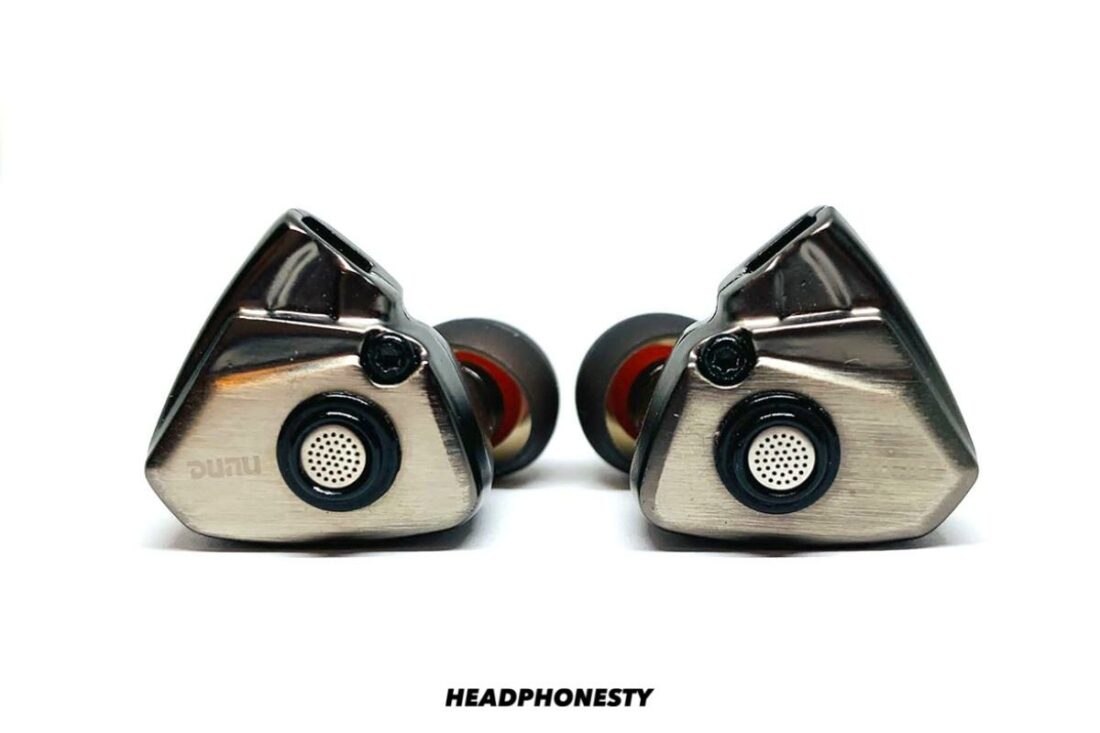
Key features
- Driver: 11mm dynamic driver with polycondensated crystal polymer diaphragm
- Sensitivity: 110 dB/mW
- Impedance: 32 Ω
- Frequency Range: 5 Hz – 40 kHz
- Cable: 2-pin detachable cable
The DUNU Titan S are a great consideration for folks yearning for something neutral-ish at the budget segment, which is usually dominated by V-shaped or Harman-tuned fare.
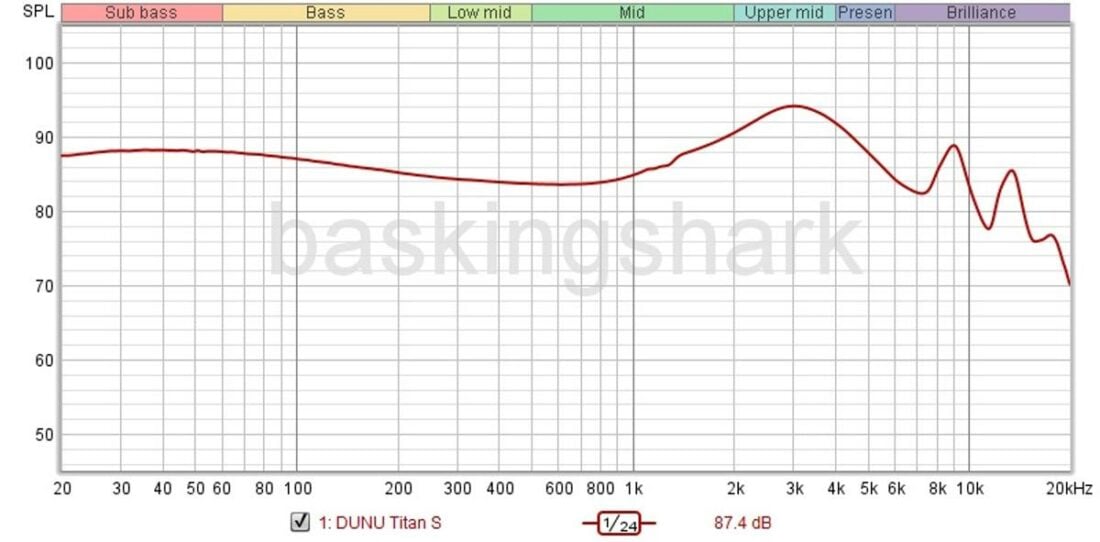
In addition to an analytical signature, timbre and technicalities are pretty adequate. The Titan S are also straightforward to drive. The provided accessories are quite generous, and the build is robust.
There’s some sub-bass roll-off; hence this set is not recommended for bassheads. The nozzles are also a tinge long and may cause discomfort for those with smaller ears, but by and large, the Titan S are pretty unique for their neutral soundscape at this price point.
Also Good:
HZSound Heart Mirror
The Heart Mirror are another bright neutral pair, with superb aesthetics and handy accessories. They also boast excellent technical performance, but are harder to drive than the Titan S. Soundstage is unfortunately quite compressed on the Heart Mirror, and they may have some treble spikes and anemic bass.
Essentially, the Heart Mirror are a hair less refined in tonality, timbre, and technicalities, when compared to the Titan S. But the former are substantially cheaper, so they are a great option for those looking for IEMs on a tighter budget.
Tangzu Audio Zetian Wu
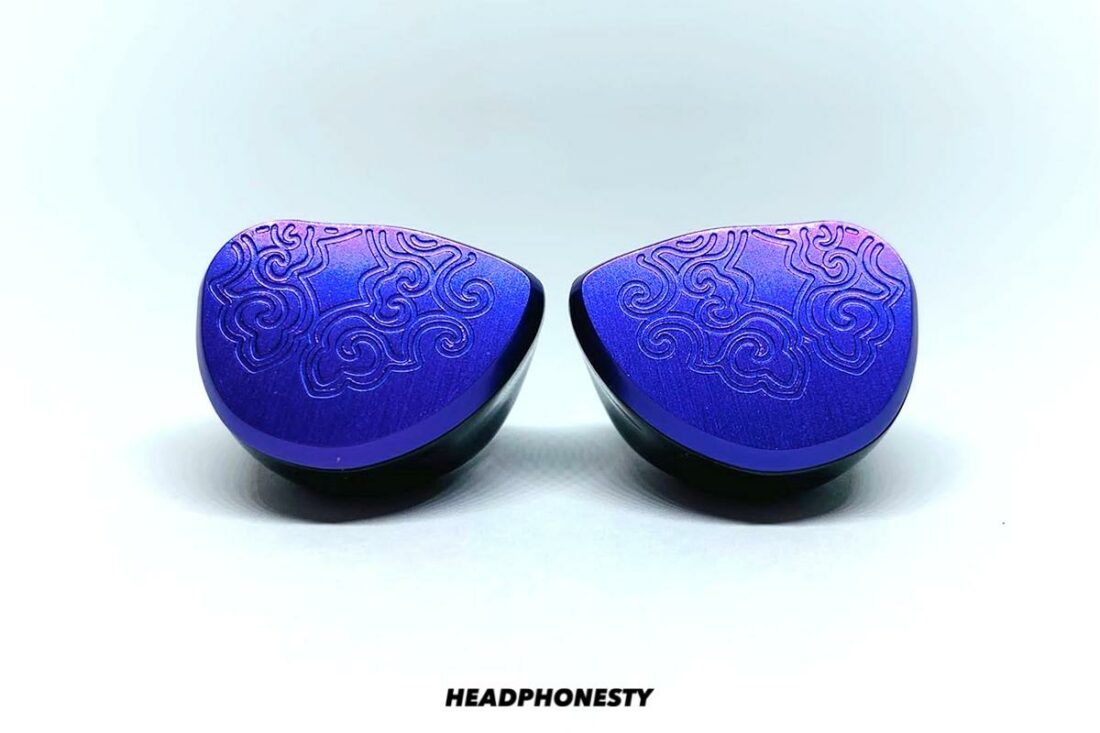
Key features
- Driver: 14.5mm planar driver
- Sensitivity: 100 dB
- Impedance: 16 Ω
- Frequency Range: 20 Hz – 20 kHz
- Cable: 2-pin detachable cable
In the current planar frenzy – where planar pairs are pushed out like candy every few days – most planar IEMs bring lightning-fast transients and class-leading technicalities to the table.
However, this is a double-edged sword: the rapid transients may lead to a lack of sub-bass excursion and decay, and timbre takes on an unnatural sheen. Additionally, many planar IEMs have good air and extension but can suffer from a harsh treble.
Enter the Tangzu Audio Zetian Wu: these bring a U-shaped balanced profile to the planar table, with excellent note weight and a realistic timbre.
The Zetian Wu are arguably the most balanced of the current planar competitors and have a very safe and non-fatiguing treble. Coupled with the good fit, they are well-suited for longer listening sessions.
While the Zetian Wu are relatively easy to drive, they scale well with amplification and without much distortion.
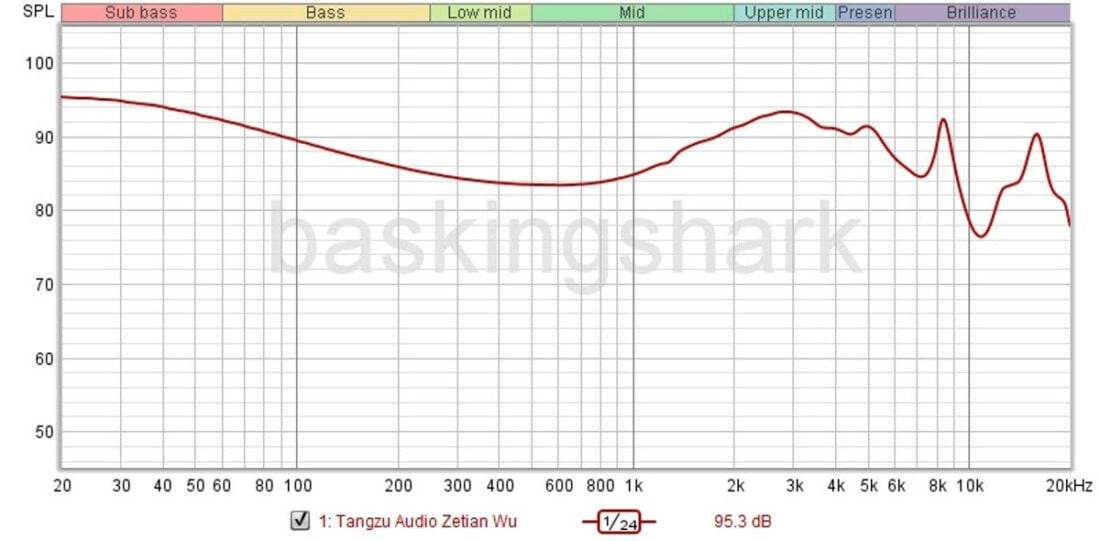
On the other side of the coin, the Zetian Wu have a dearth of sparkle and air in the treble, and the bass at times, lacks texture and may smear, especially if underpowered. They also play second fiddle in technicalities, when compared against other planar nemeses.
Final Audio E3000
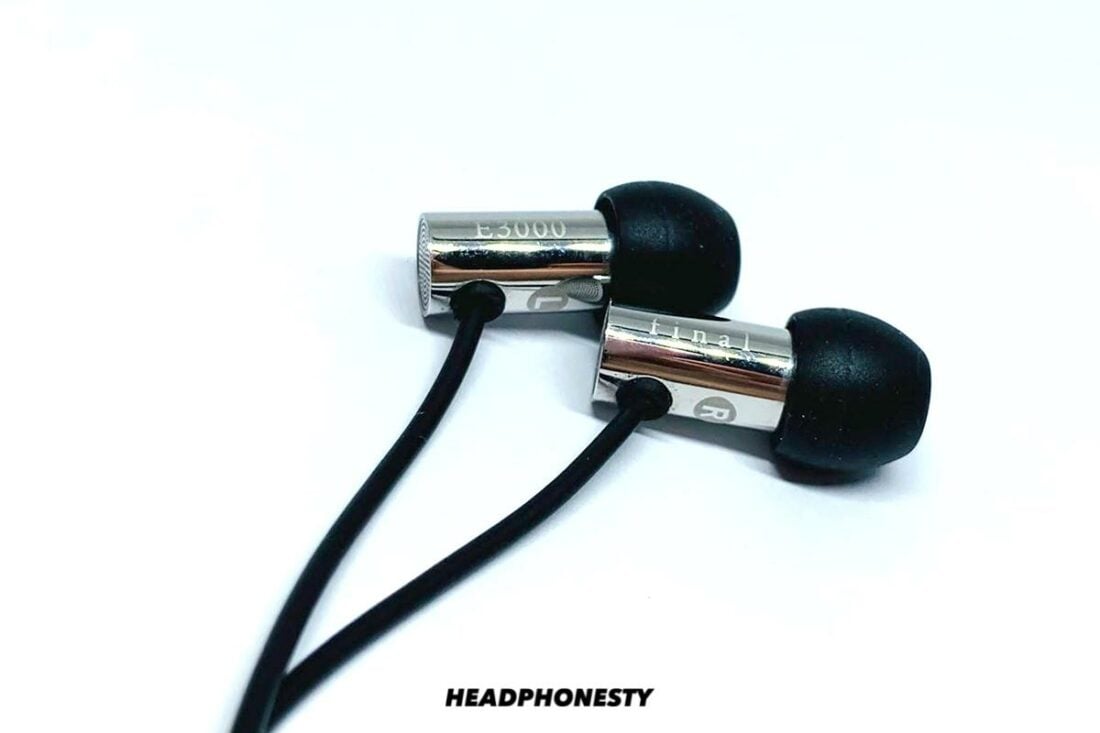
Key features
- Driver: 6.4mm dynamic driver
- Sensitivity: 100 dB/mW
- Impedance: 16 Ω
- Frequency Range: not provided by the manufacturer
- Cable: non-detachable
The E3000 are part of the bullet-shaped E Series of the Japanese brand, Final Audio.
These feature an L-shaped tuning, boasting big bass and a rolled-off treble. They also come with Final type-E black tips, which are very popular among the audiophile community; these tips are useful to tame treble and tighten the bass.
When well-powered, the E3000 have an expansive soundstage, with superb imaging and layering at the sub $50 price point. The midrange of the E3000 is lush and well-balanced. Timbral accuracy is also authentic.
This set is very well-suited for our treble-sensitive brethren, with the tuning being non-fatiguing and on the dark side. They can be used for hours on hours or even for a sleeping IEM.
The big bass on tap should please most bassheads. Dont believe us? Take a look at the bass shelf of the graph below!
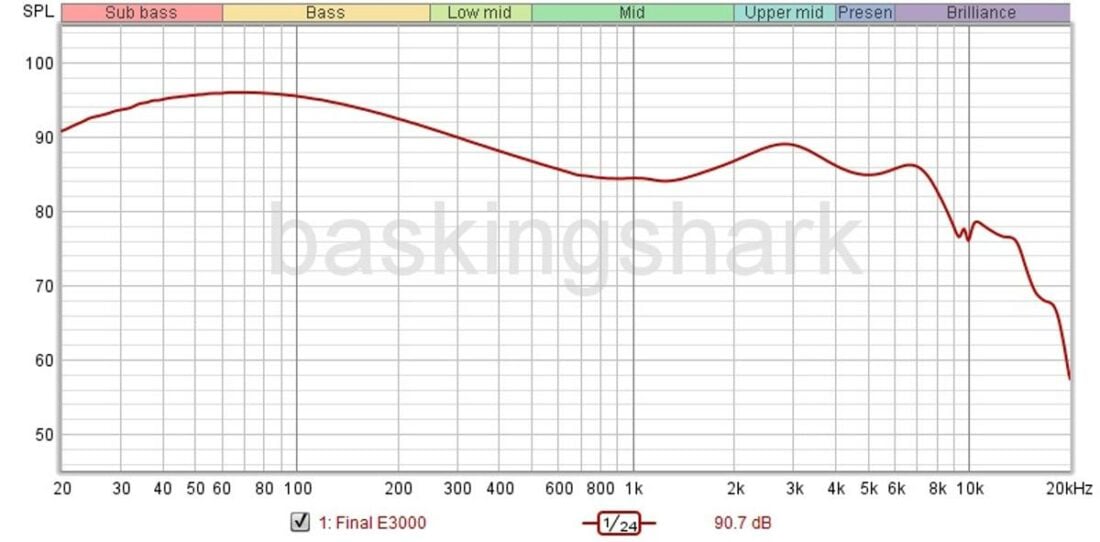
Due to low sensitivity, the E3000 need amplification, so you are advised to use a strong source with them. The cables are non-detachable, thin, and microphonic, which could be a deal-breaker for some. The E3000 also isolate poorly, and some might find the bass on the E3000 slow and nebulous (the bass tightens when amplified).
LETSHUOER S12 Pro
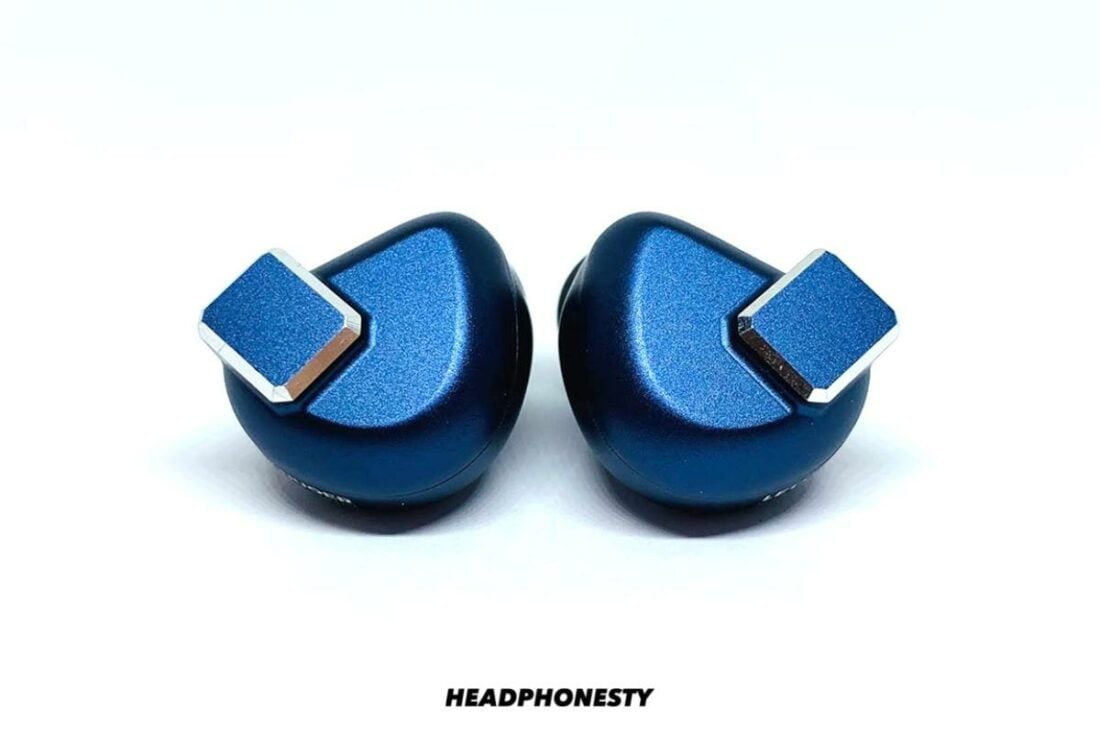
Key features
- Driver: 14.8mm planar magnetic driver
- Sensitivity: 102 dB
- Impedance: 16 Ω
- Frequency Range: 20 Hz – 20 kHz
- Cable: 2-pin detachable cable
For folks wanting to enter the planar game, the LETSHUOER S12 Pro are definitely a competitive option. They are a V-shaped pair with above-average technical performance, fast transients, solid build, and are relatively easy to drive.
LETSHUOER has also included a modular cable in the packaging, allowing consumers to match the S12 Pro with a variety of balanced and unbalanced sources.
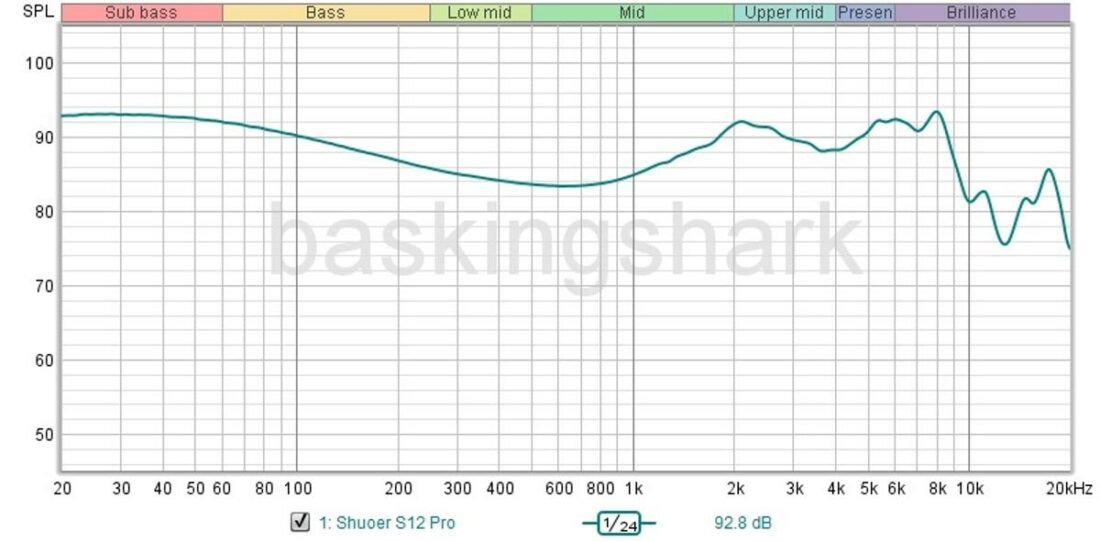
As per the V-shaped tuning, the S12 Pro have a “fun” bass and great air and sparkle in the treble – trebleheads will like the detail and clarity they bring to the table. Treble-sensitive users, however, may find the S12 Pro a tinge too bright.
Nevertheless, the S12 Pro provide a better value proposition than the 7Hz Timeless, which in my book, have slightly better resolution but are more expensive, with poorer timbral accuracy, a markedly shallower soundstage depth, and worse comfort.
KBEAR Aurora
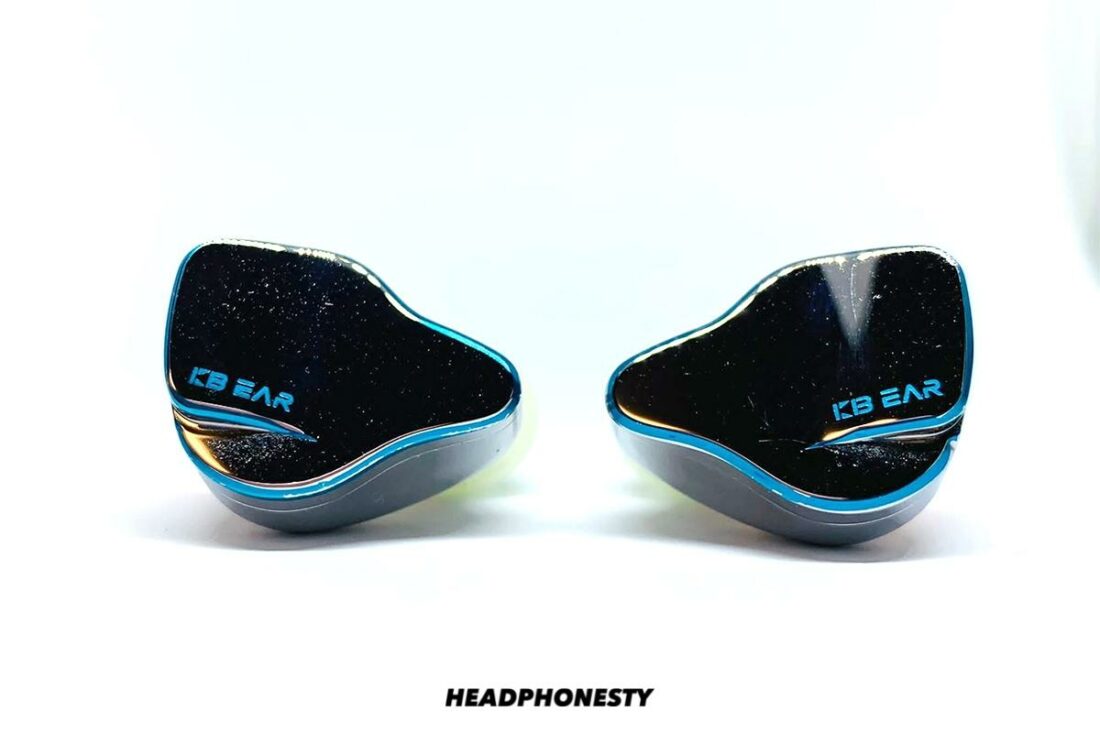
Key features
- Driver: 10mm nano titanium-plated diaphragm dynamic driver
- Sensitivity: 105 dB/mW
- Impedance: 18 Ω
- Frequency Range: 20 Hz – 20 kHz
- Cable: 2-pin detachable cable
The KBEAR Aurora sport a Harman-like tuning, with thick note weight and excellent timbral accuracy. I would define timbral accuracy as “what lets us tell apart a musical instrument or voice, even when they are hitting the same note at the same fundamental pitch and loudness”. i.e., does a violin sound like a real-life violin?
Most consumers should be quite at home with the pleasant tonality and organic timbre that the Aurora provide. Indeed, they are a great pairing for music genres that feature predominantly vocals or acoustic instruments.
Accessories are generous, and they have good build and fit. The Aurora are also easy to drive.
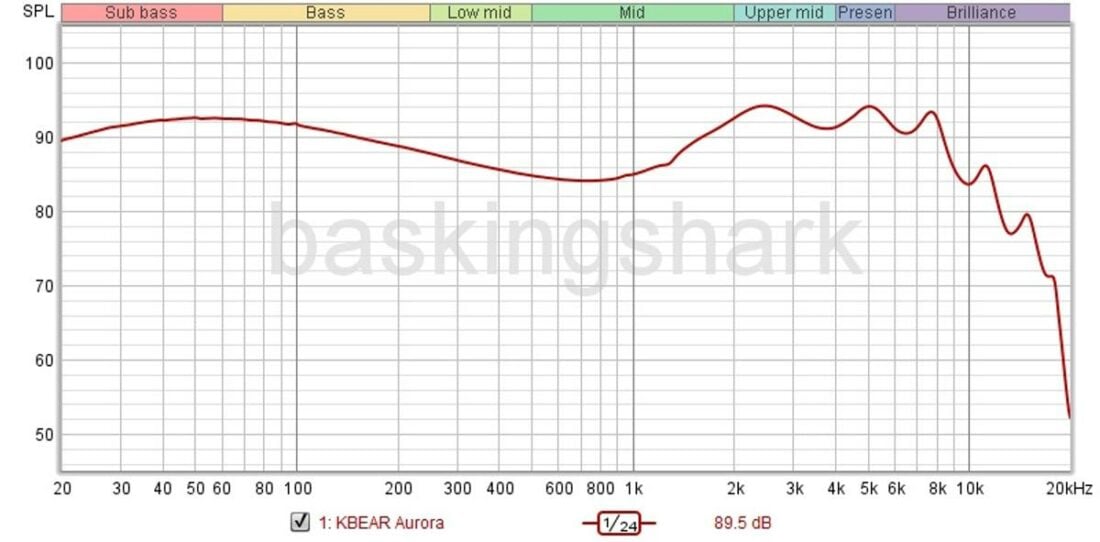
Unfortunately, compared to similarly priced single DD rivals in the USD$100 range, the Aurora fall short in technical performance – soundstage, imaging, instrument separation, and micro-detailing are below average. Their shiny shells also potentially make them fingerprint and scratch magnets.
If timbre is up your alley, the Aurora may be worth mulling over, as they are frequently discounted during sales!
KBEAR Ormosia
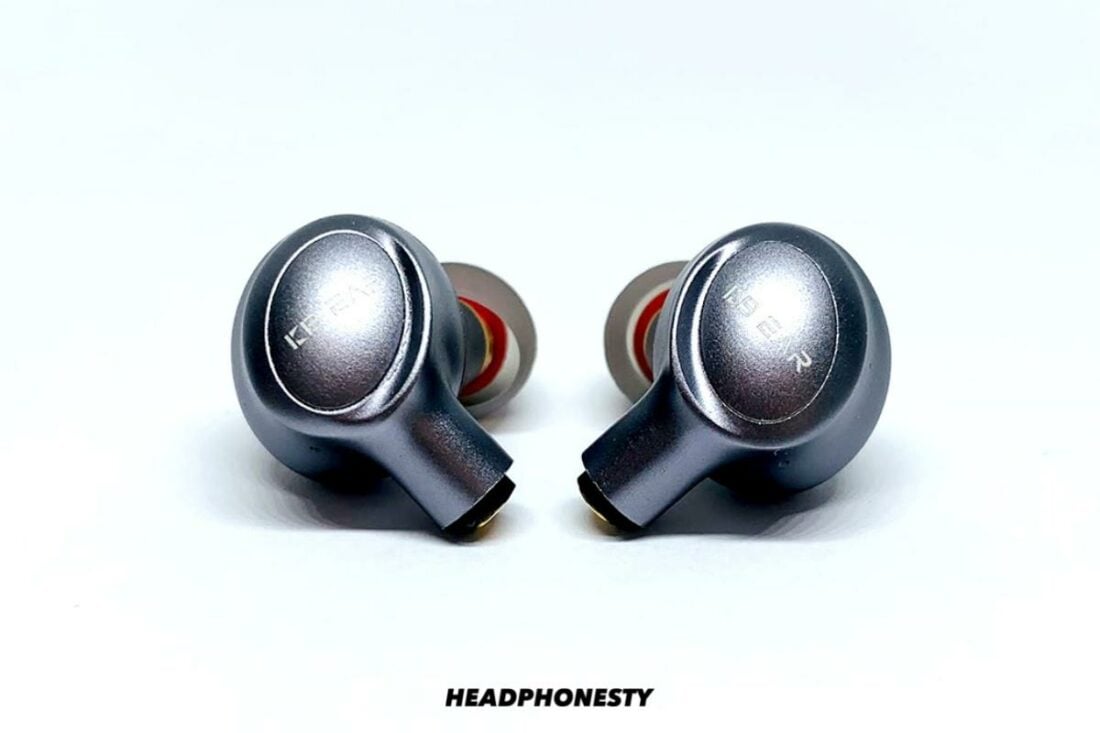
Key features
- Driver: 10 mm composite dynamic driver + composite balanced armature driver
- Sensitivity: 108 dB
- Impedance: 16 Ω
- Frequency Range: 20 Hz – 20 kHz
- Cable: MMCX
The KBEAR Ormosia are a very coherent hybrid featuring a smooth tuning. These can be used for marathon listening sessions, given the tamed upper frequencies.
They are quite ergonomic and can be worn cable-down or over-ear, thus increasing fit options. The Ormosia are also easy to drive and well- accessorized.
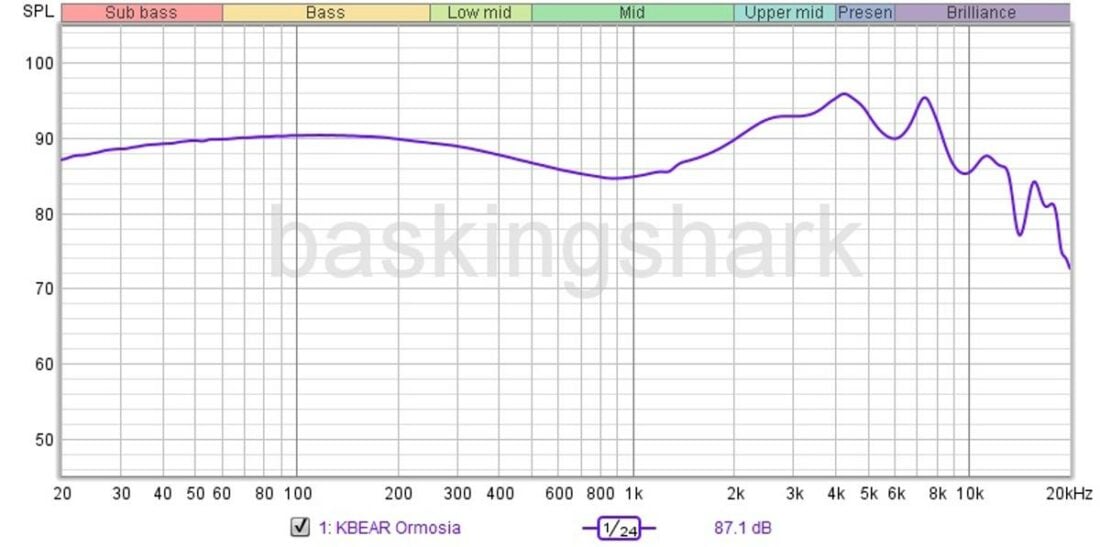
Despite the graphs appearing to have peaks (some are coupler artefact peaks), the Ormosia actually do not sound harsh at all. With a less than 10 dB pinna gain, vocals are not shouty, and the music sounds laid-back.
The Ormosia, unfortunately, have middling technicalities and also suffer from sub-par isolation and a lack of sub-bass extension. Thus, they are a pair that are better suited for chilling and relaxing rather than for critical listening or analyzing every nuance in the music.
7Hz Salnotes Zero
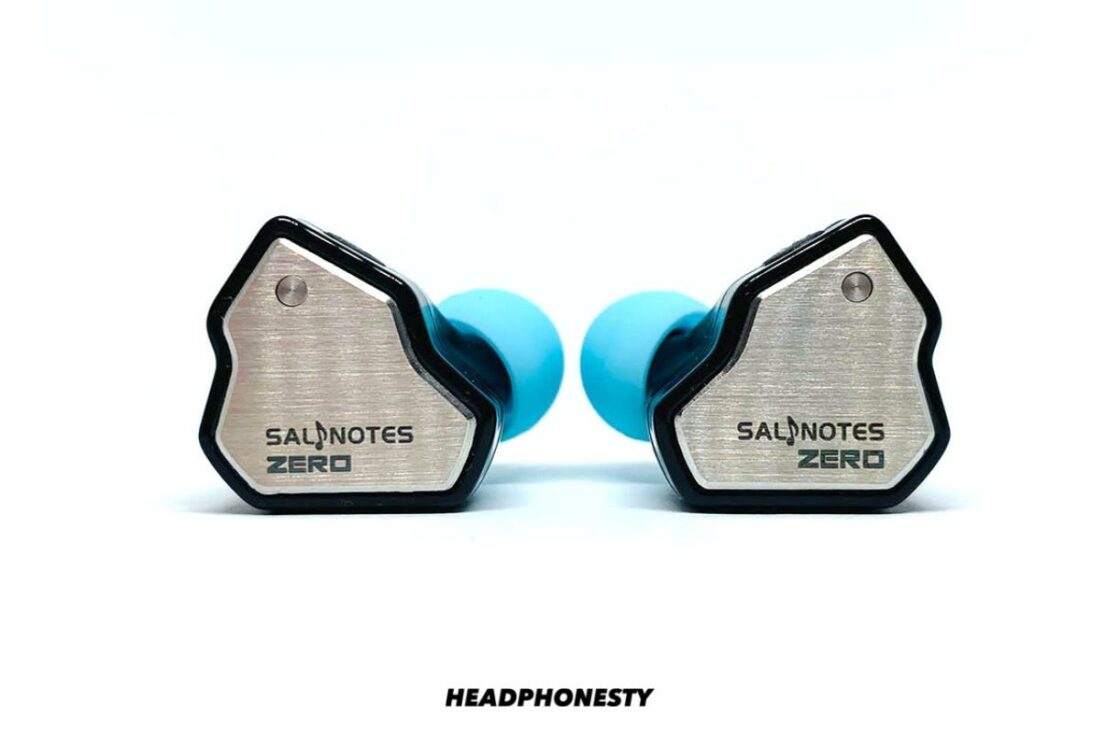
Key features
- Driver: 10mm dynamic driver, metal composite diaphragm
- Sensitivity: 108 dB
- Impedance: 32 Ω
- Frequency Range: 10 Hz – 20 kHz
- Cable: 2-pin detachable cable
If you, dear readers, are looking for something that is literally worth every penny, the 7Hz Salnotes Zero have you covered. These boast a neutral, bright tuning with a natural timbre and a fast, tight bass. Technicalities are more than decent for the 20 bucks entrance fee, and treble is relatively well-extended, with good clarity on tap.
Given that there are some pricier IEMs that are sold with non-detachable cables in this day and age, it is quite satisfying to see that the Salnotes Zero have a 2-pin detachable option.
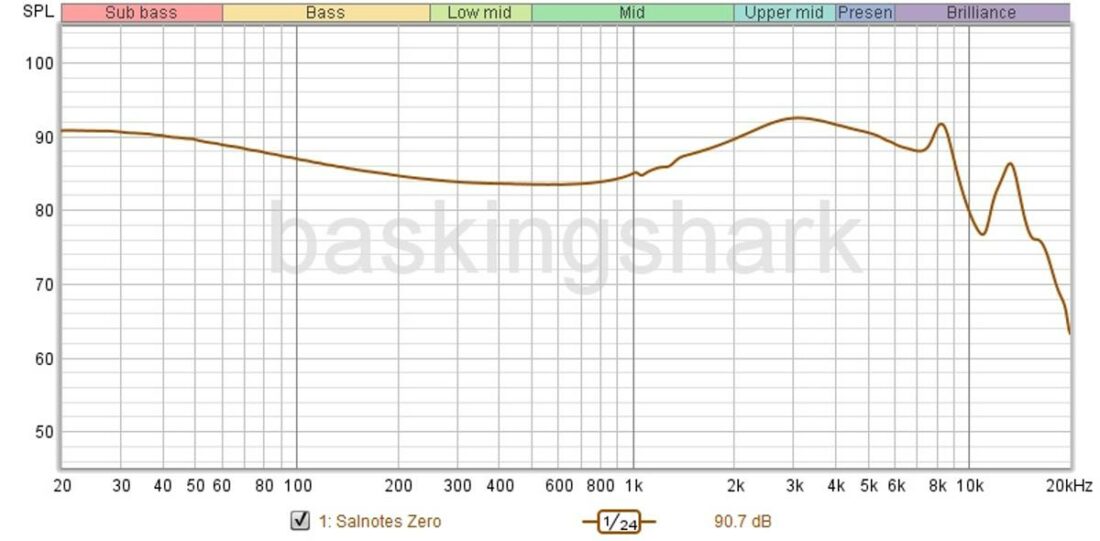
That said, at this price point, there are bound to be compromises. The Salnotes Zero are not for bassheads in view of the lack of bass quantity (although the quality is well-done).
The Zero also have a sterile tuning, with a thin note weight. The treble may veer to fatiguing with longer listening sessions, and the slightly bigger shells may cause an awkward fit.
Nevertheless, compared to other USD$20-ish competitors, the Salnotes Zero feature a mature tuning and do well in most departments.
They are definitely a possibility for those wanting to dip their hands (or rather, ears) into the budget IEM rabbit hole or even those looking at it as a gift option.
DUNU Talos
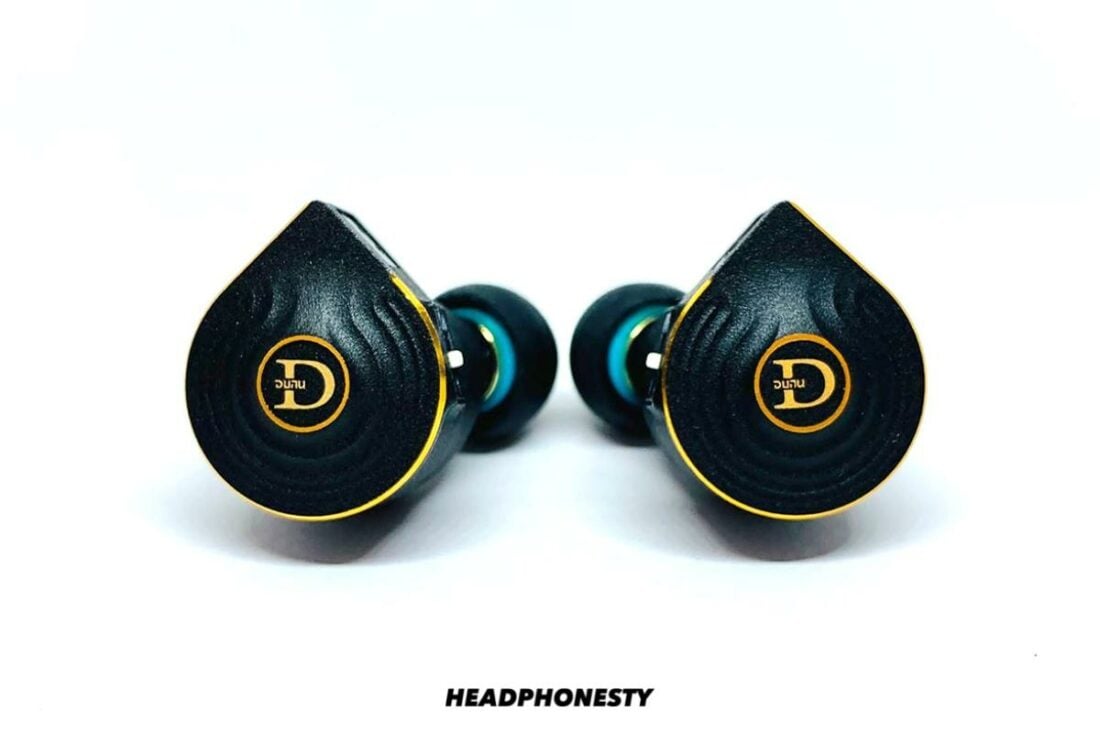
Key features
- Driver: 14.6mm planar magnetic driver with customized dual balanced armature (BA) drivers
- Sensitivity: 100dB
- Impedance: 16 Ω (stock driver)
- Frequency Range: 5 Hz – 40 kHz
- Cable: 2-pin detachable cable
The DUNU Talos are a competitive planar pair. With these, you’d be theoretically getting two IEMs on one purchase, as they can be toggled between a pure planar and hybrid mode.
In the stock planar mode, the Talos sport a U-shaped tonality, which is pretty all-rounded for most music genres. Timbre is decent, and technicalities are excellent, even when compared to other planar contemporaries.
Perhaps other than the Moondrop Stellaris, the pure planar setting of the Talos probably gives the best technicalities of the current planar crop (at the time of writing – this planar industry moves so rapidly!).
The switches are easily manipulated, and accessories are quite lavish. On the pure planar setting, the soundstage is not the best, though.
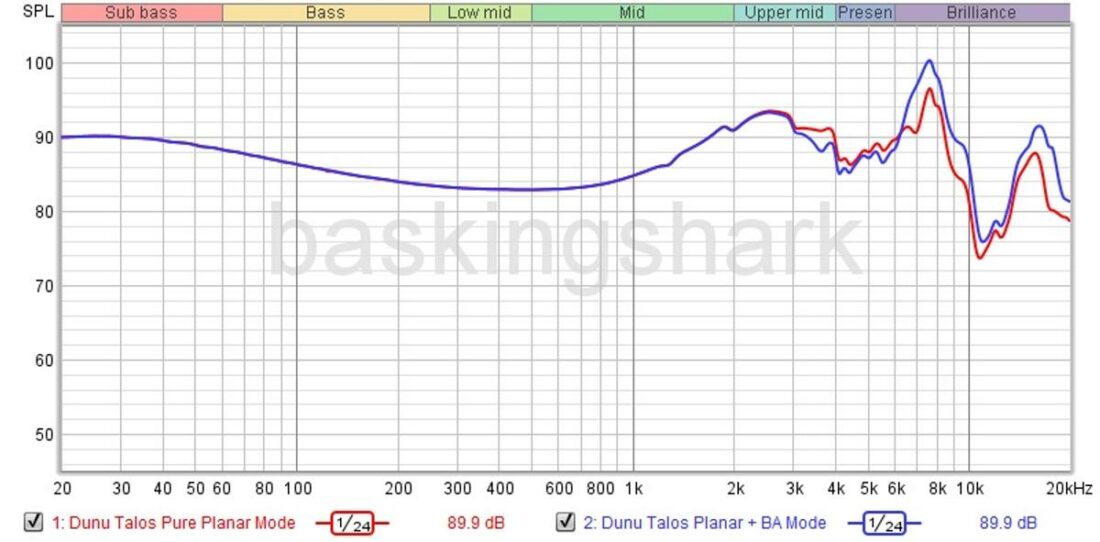
When the hybrid mode is activated, the BAs come out to play, and class-leading resolution greets the listener. Soundstage, air, and sparkle increase tremendously, though it can be argued that this mode can be fatiguing and sibilant. Treble-sensitive users are best advised to stick to the pure planar setting.
Granted, the hybrid mode of the Talos is not for everyone, but this would be a good option to keep in the pocket, for perhaps trebleheads, or for those wanting sheer resolution, to critically analyze music for example.
Most consumers will probably be sticking to the pure planar setting on the Talos, which already guarantees good tonality, timbre and technicalities in a compact package.
BQEYZ Autumn
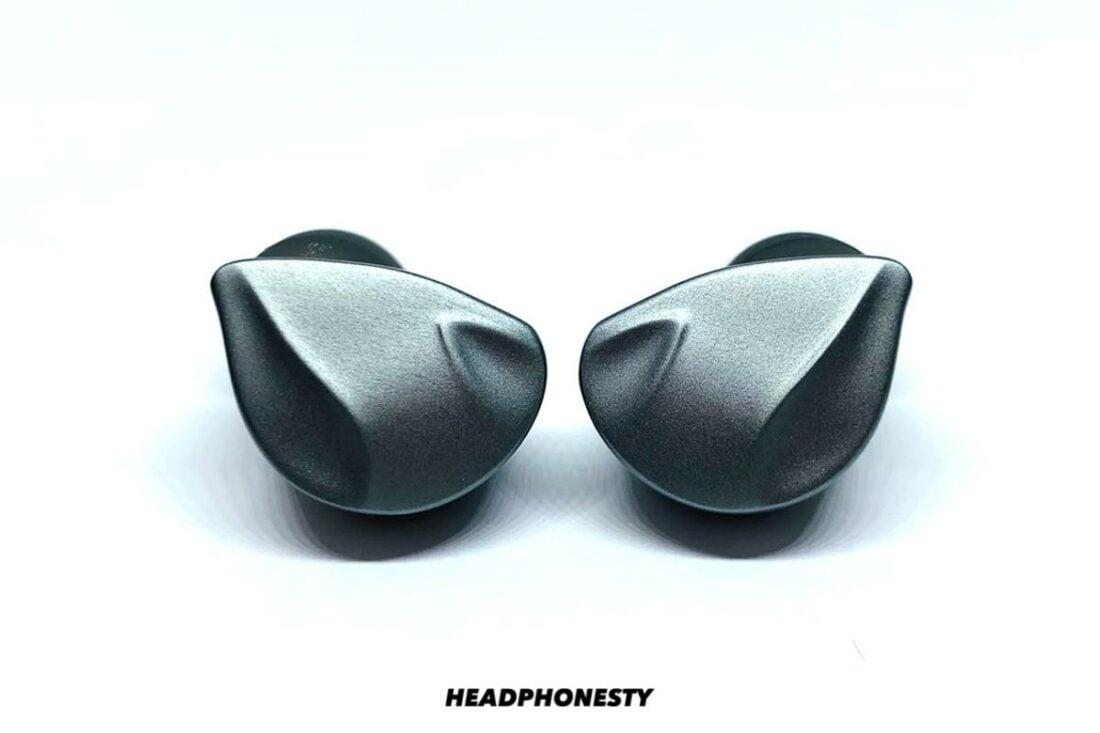
Key features
- Driver: 13mm dynamic driver
- Sensitivity: 110dB
- Impedance: 46 Ω (stock driver)
- Frequency Range: 7 Hz – 40 kHz
- Cable: 2-pin detachable cable
The BQEYZ Autumn are a single DD pair that utilize innovative magnetic filters to change sound signatures. While most other “tunable” IEMs employ switches or screw-on nozzles, the Autumn operate by bringing a magnetic wand next to the filter compartment on the housing, where the filters are easily attracted on and off.
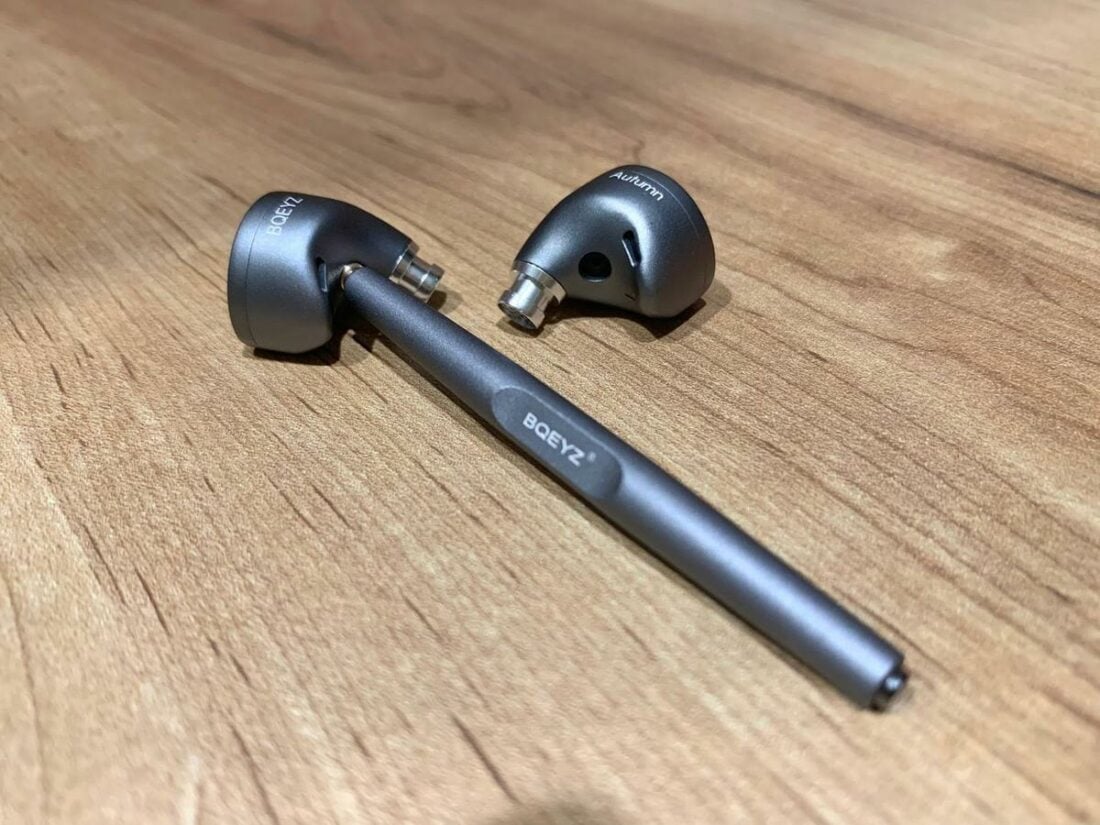
This in theory will lessen wear and tear – I’ve seen reports of tuning nozzles getting lost or the threads wearing out and even switches getting stuck or broken!
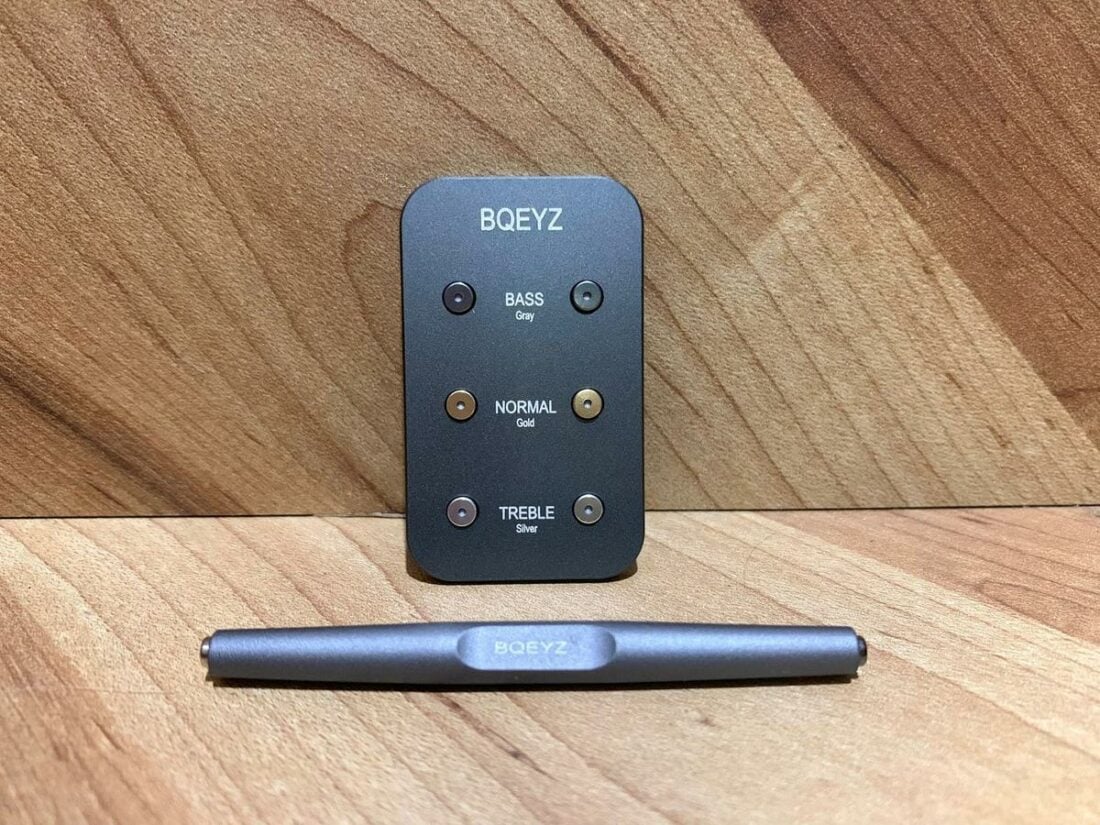
Unlike some “tunable” IEMs, whose filters are bordering on gimmicky (cough cough, looking at you, Moondrop KATO and BGVP DMG), the Autumn’s filters do drastically affect the sound.
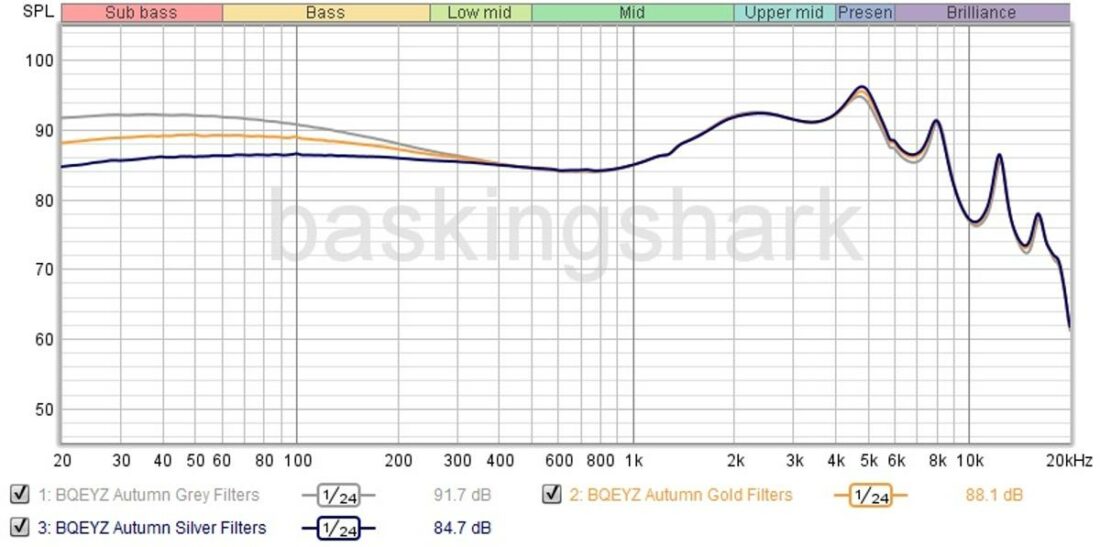
As per the graphs above, the filters affect the bass response from 20 – 300 Hz. As the ears take the entire frequency spectrum as a whole, a drop in bass quantity will correspondingly be perceived to boost the upper frequencies and vice versa.
The Autumn can be tuned along a spectrum from V-shaped (almost basshead) to U-shaped (balanced), to cold neutral.
These changes are achieved via the aforementioned magnetic swappable nozzles, which are very easy and foolproof to use. Swapping filters (and hence the sonic profile) takes only a couple of seconds.
Additionally, the Autumn have an expansive soundstage, especially when they are amplified. Timbre is organic, build and comfort are good, and accessories are bountiful.
Considering the higher impedance, the Autumn scale better with amplification. There is occasional glare at the 5kHz frequency on all filter settings, and isolation is below average.
BLON BL-03
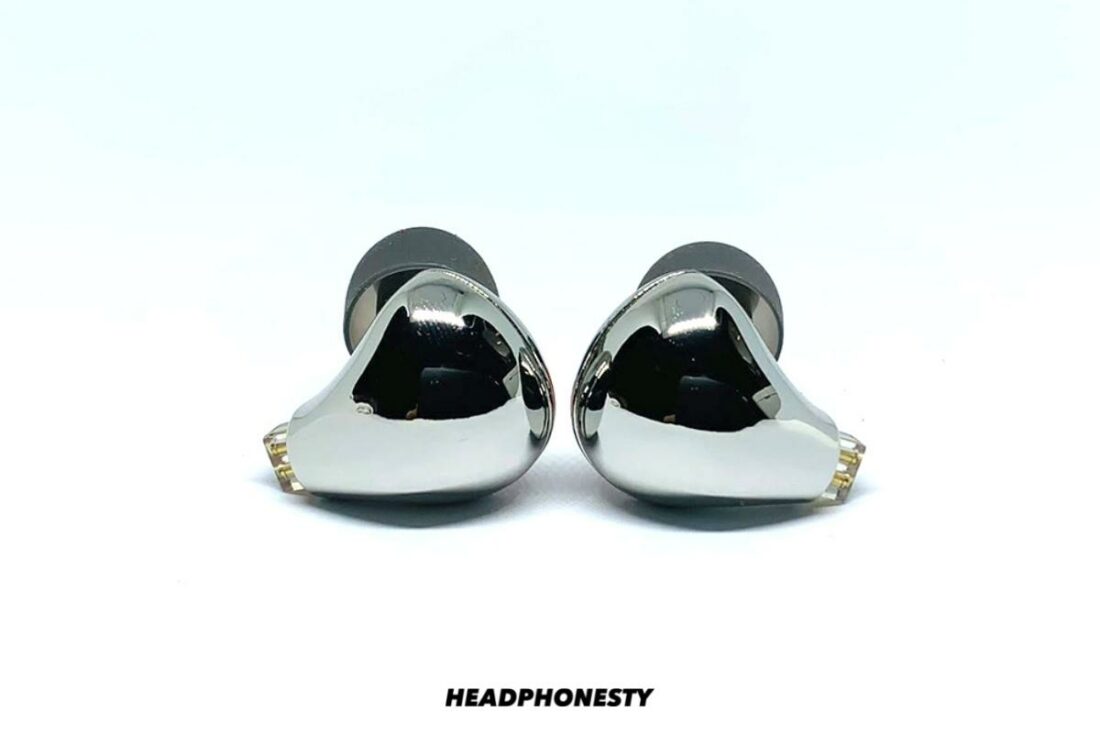
Key features
- Driver: 10mm carbon diaphragm dynamic driver
- Sensitivity: 102dB
- Impedance: 32 Ω
- Frequency Range: 20 Hz – 20 kHz
- Cable: 2-pin detachable cable
With weekly sidegrade releases inundating our ears, it is easy to think that newer is better. However, most of these sidegrade hype trains are not readily talked about mere weeks after release, and thus end up as a footnote on audio forums.
A good sign that something is still relevant is that said IEMs are still talked about and recommended months after release.
The venerable BLON BL-03 are a pair riding the much-talked-about hype train, but justifiably so.
The BLON BL -03 were released more than 3 years ago, to big acclaim, turning the ultra-budget IEM market on its head, and changing our expectations of what USD$20 can offer. Indeed, these are still recommended by budget IEM aficionados in forums even today.
The BL-03 feature a harmanish tonality with a mid-bass boost. Timbre is exceptional, and everything sounds natural. An analog signature, thick note weight, and a smooth and agreeable tuning are there to greet your ears.
And for an ultra-budget pair, the BL-03 even incorporate a 2-pin connector, which cannot be said for many rivals at the same price point (they usually are non-detachable or utilize less-sturdy MMCX connectors).
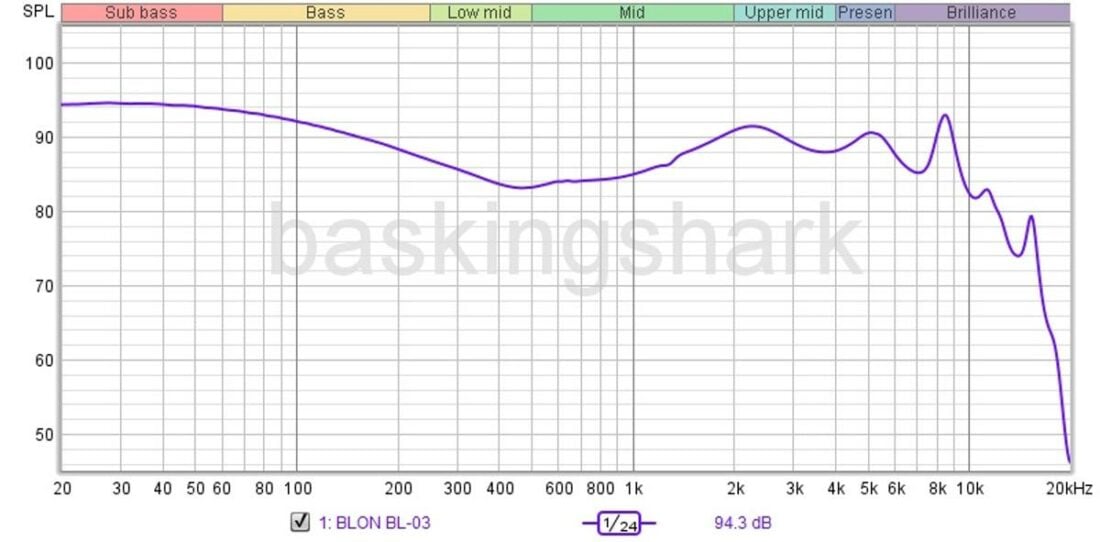
One of the cons of the BL-03 is the fitting. They have an Achilles’ heel of a very short nozzle, necessitating most consumers to use aftermarket longer nozzle ear tips or mods just to secure an optimal fit. This potentially may add to costs.
Additionally, the BL-03 have below-average technicalities. Still, for the cheap price, I can close one eye on this aspect since the BL-03’s tonality and timbre are really something to die for.
Truthear HEXA
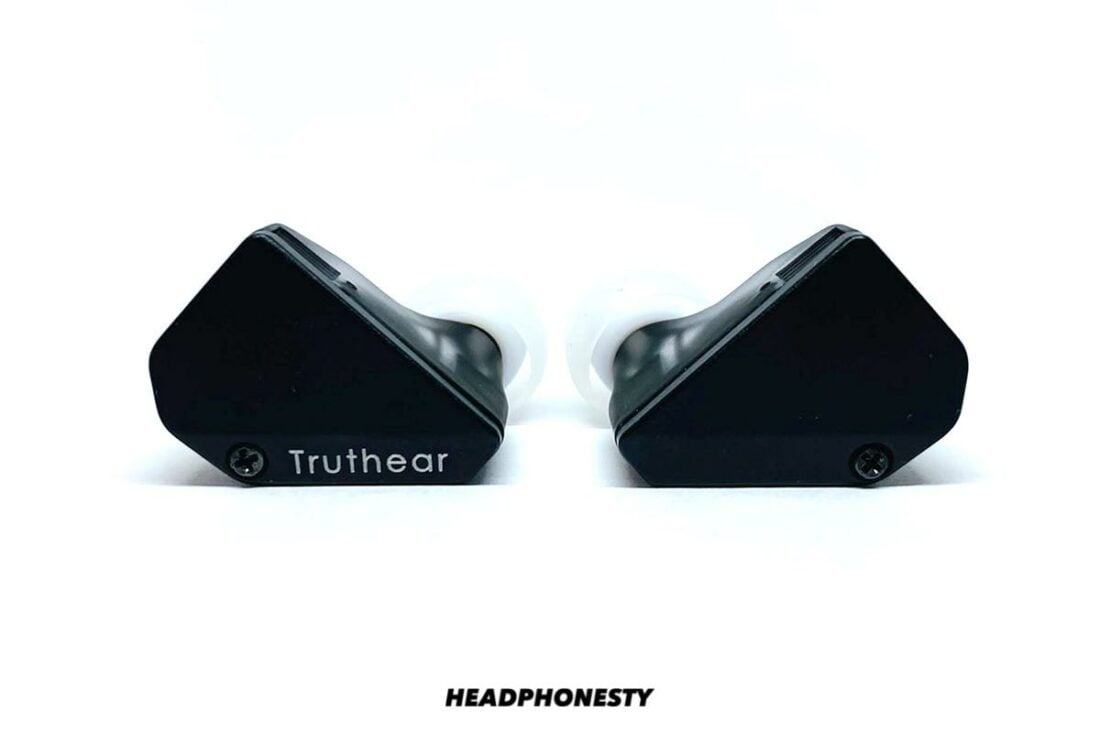
Key features
- Driver: 1 x 10mm liquid crystal polymer (LCP)/polyurethane dynamic driver (DD) and 3 x customized balanced armature (BA) drivers
- Sensitivity: 120dB/Vrms
- Impedance: 20.5 Ω
- Frequency Range: 20 Hz – 20 kHz
- Cable: 2-pin detachable cable
The Truthear HEXA round up this list as the best sub-USD$100 hybrid.
They sport an exceptionally unique tonality – neutral with a sub-bass boost – which is hardly seen in the budget segment.
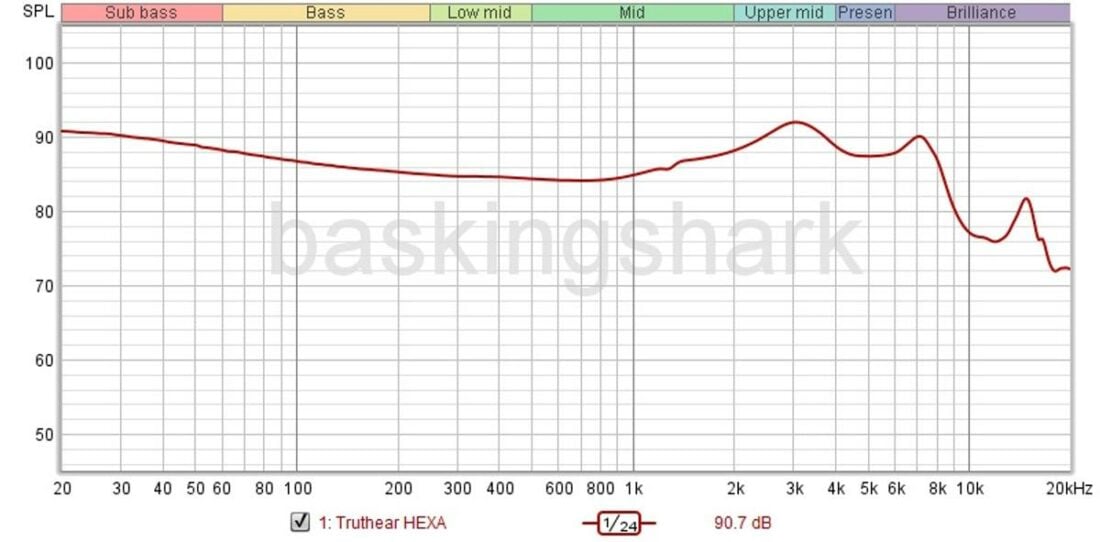
Accessories are generous (including a standing waifu), ergonomics and build are solid, with top-notch isolation.
The tuning is also fatigue-free, with no peaks or troughs. Coherency is exemplary, with the DD bass keeping up well with the BAs and a natural timbre being displayed throughout the frequency range. In fact, if I didn’t know better, I would have thought that the HEXA are a single-driver pair, instead of a hybrid.
Additionally, the HEXA are sub-bass focused, with a very nimble bass, free of mid-bass bleed – they can keep up with complex bass tracks without any smearing.
Some nitpicks include a compressed soundstage and that the HEXA do require some amplification to scale. The lack of a mid-bass hump may also render the HEXA inappropriate for mid-bass-focused genres such as hip-hop or EDM.
In a nutshell, the HEXA pack a unique tonality, making them rise above the hackneyed V-shaped and Harman fare.
Overall, they score high marks in timbre and technicalities, and may even be used by musicians for stage monitoring because of the neutral profile, comfortable fit, and first-rate isolation.
All these for less than USD$100 – this would be unheard of just a few years back (no pun intended)!

How come Tin T2 plus is not here when it is 4 1/2 star on you review?
Hi Sir/Mdm
The Tin T2 Plus was reviewed by my colleague, though personally, I would probably give them a 3.5 – 4/5 score.
The Tin T2 Plus are actually mentioned in the article under “also good” ie honourable mention, just below the Moondrop Aria portion.
I thought the Tin T2 Plus have quite a safe U-shaped tonality and good timbre that suits most music genres, but they have quite bad QC for MMCX (for my set and multiple reports on forums). There are a lot of reports of MMCX connectors failing and sound cutting out.
Other than the QC issues, the T2 Plus are quite a solid set, don’t get me wrong, but they don’t get much ear-time from me, cause I find them a tinge boring and undynamic. YMMV though!
What about the KZ Accostics hype going on these days with multiple driver options. Can you explain why they are not on the list then?
Hi Sir/Mdm
I’ve owned around 20 KZs in the past and TBH, most of them are not too bad technically, but majority had bad timbre and tended to be quite boosted in the upper registers and can get fatiguing/sibilant. Most of them are V shaped too, personally I’m not really a fan of their house sound, but of course different strokes for different folks.
There was even a recent KZ driver scandal here: https://www.headphonesty.com/2022/03/kz-fake-multi-driver-iem-scandal/
KZ was my very first introduction to the CHIFI budget IEM world (with the KZ ZS6) and I thank them for that, but the past few months, their marketing strategy seems to be via releasing multiple sidegrades every few weeks and hoping something sticks on the wall. Kinda like using consumers as beta testers, a few weeks later they release a Pro version of it.
agreed. I’ve had 3 KZ’s up until now, and I’ve had enough. I won’t remember exactly the models, but one was not good sounding, one broke from humidity (it was open back and sweat went through easily) and the third had 3 drivers and one driver of the right side literally wasn’t plugged in.
The Wan’ er couldn’t get to the final list?
P.s: take a listen to the kiwi ears cadenza
Hi Sir
Sorry this article was written before I got the Wan’er. The Wan’er is a really good ultra-budget set, and I think it is a sidegrade to the Salnotes Zero for those that want something with more note weight and something not so sterile. But perhaps the Wan’er will make an appearance for the 2023 list!
Thanks for suggesting the Kiwi Ears Cadenza, have seen many good things about it from the others. Have you tried it? If I get a set, will definitely write a review about it!
Cheers!
I’m in between 7hz salnotes Dioko, and truthear Hexa, and reading on this page, should i choose Truthear Hexa over 7hz Dioko? Can you tell more comparison between those two…?
Thanks you
Hi Sir/Mdm
Generally I try not to compare different driver types as they have their own pros and cons (7Hz Dioko planar versus hybrid HEXA).
But FWIW, the Dioko is brighter with greater treble extension, but it hence is more sibilant and harsh. I find it more fatiguing as such, though the Dioko has better resolution. Dioko also has a worst artificial timbre and the fit is quite iffy compared to the HEXA.
Unless you are treblehead and want something lean and sterile and analytical, otherwise I would take the HEXA any day between the two. Hope this helps!
I bought Moondrop Aria but for some reason, they hurt my right ear, I believe because they are too heavy or not comfortable (?). Are the Truthear HEXA too heavy too? or are they more comfortable than Moondrop aria?
Hi Sir/Mdm
I find the Aria more comfortable than the HEXA in terms of ergonomic shape. But the HEXA is lighter in weight than the HEXA. YMMV, as we have different ear anatomies.
If you could, is it possible to visit a nearby audio shop to audition the HEXA? Nothing beats actually trying it in person!
whats your opinion about the fd3 pro, or would you prefer the truthear hexa?